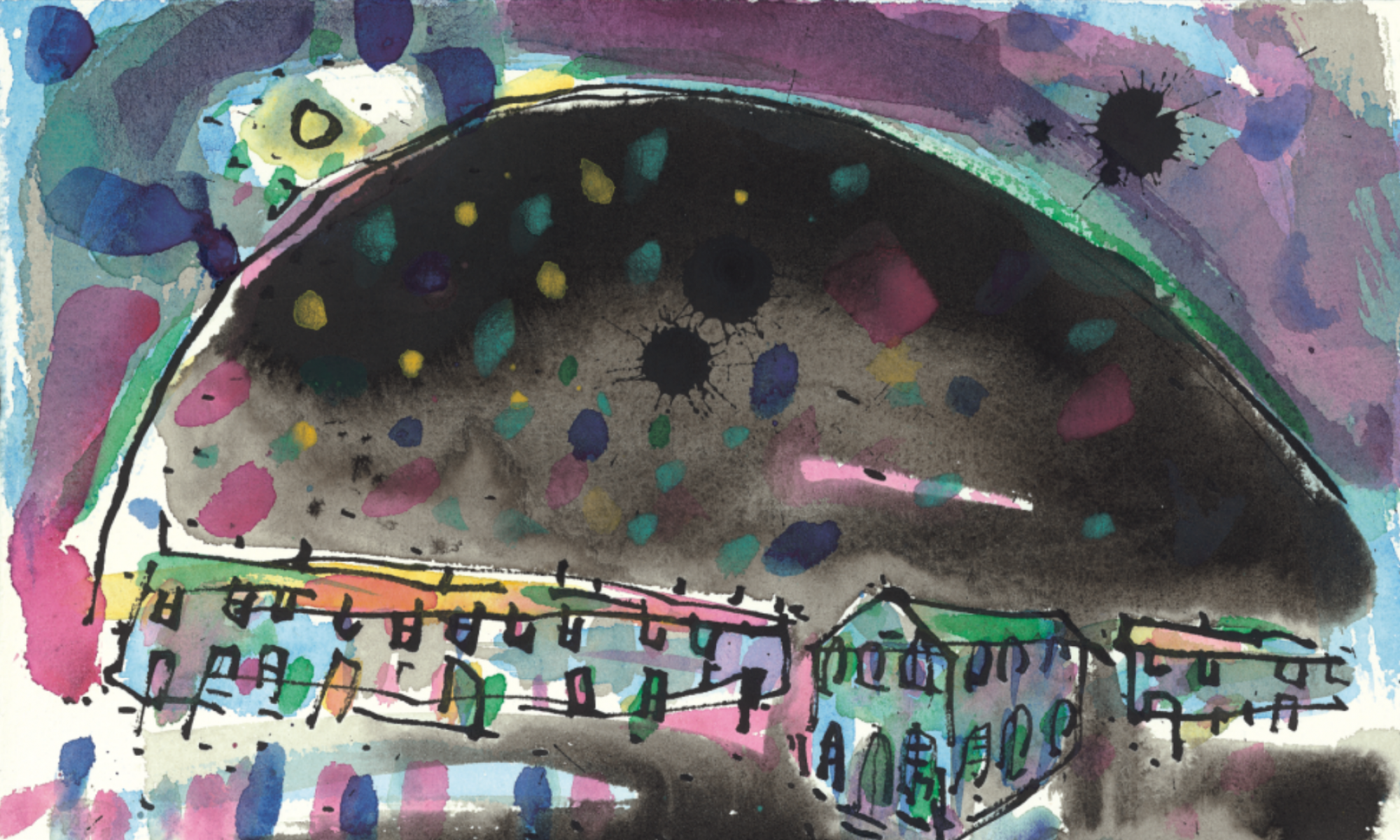Obituary for the Guardian – David Moore
William Brown
Creative Scots-Canadian artist who left his mark in Wales
William Brown was a prolific and highly imaginative painter and printmaker “born on the shores of a large grey lake” in Toronto, Canada, to Scots parents Cathy and Alex Brown in 1953. Twenty years later he came to Britain, living in the South West but, later, moving to Wales where he was to make a strong impression in the visual arts.
Brown had a unique sensibility. His art, whilst intentionally naïve in style, reflected a personality which was, in certain respects, troubled and curiously child-like. His colours were unusually vivid; his brushwork loose, immediate and expressive. His work comprised a fantastic – yet sophisticated – blend of visual imagery derived from his travels, poetry, mythology, folklore and folk-art. It displayed remarkable visual playfulness as well as surreal humour, seeming to affirm an enjoyment of life whilst, paradoxically, having a melancholic feel about it.
Brown’s imagery was eclectic, drawing freely upon places and cultures familiar to him. Polar bears, moose and wolves evoked the tundra, icy wastes and coniferous forests of Canada. Loup-Garou – a werewolf – was “a nagging reminder of the animal in the human, powerful, cunning and unsophisticated.” The Welsh New Year custom of the Marie Lwyd, still played out at Llangynwyd where Brown’s studio in an old church was located, became a popular motif. He visited Galicia, Morocco and Tunisia and aspects of Berber culture became absorbed into his visual vocabulary.
Brown’s paintings display exciting tension and movement derived from his particular combination of colour and composition. Yet, he produced highly successful images by linocut and silkscreen printmaking in black and white. The French poet Lucien Suel remarked that: “even his black and white is full of colour.” Marie Lwyd Chat, a copy of which is in the collection of the Contemporary Arts Society for Wales, features opposing horse figures derived from the Welsh custom of the Marie Lwyd confronting one another and, bizarrely, engaged in conversation.
Brown considered himself to be a narrative painter. He enjoyed the play of words as much as images. An enthusiastic frequenter of the imbibing haunts of south Wales artistic and literary circles, his conversation consisted of disconcerting wordplay, riddles, tales and puns. An all-pervading urge to express himself in both word and image was revealed in communications to friends and curators who might receive inexplicable bundles of drawings and jottings. He empathised with the restless French 19th century bohemian poet Jean Rimbaud and collaborated with poets. He responded to the poetry of David Greenslade on Welsh themes in the book March and to the work of Lucien Suel in Le Nouveau Bestiaire. He was a close friend of the American socialist graphic artist Paul Peter Piech, another outsider who had settled in Wales.
Brown married Goady in 1976 until their divorce in 1983. He met Carys, a deputy headmistress, in 1987. He turned up as artist-in-residence at her Devon school a little the worse for drink and she took him home to keep him off the premises. They married in 1988 and moved in 1990 to Bridgend after her appointment to a headship. She provided necessary stability, a foil for Brown’s fertile imagination, and enabled him to focus successfully upon his art. This flourished in the Welsh valleys and galleries and Brown was in demand for school and gallery workshops.
Brown once had a studio in the Old Library in The Hayes, Cardiff. There he created work such as a witty yellow painted wood and straw sculpture Yellow Horse Box with a switch for an eye and a brush for a tail. He became a vociferous member of the Old Library Artists when, in a cause célèbre of the late 1990s, they were asked to leave their studios to make way, ironically, for the high profile Centre for Visual Arts, Cardiff. Sadly, this project, which promised much and opened in 1999, barely lasted a year. The Old Library Artists moved to Oriel Canfas in Canton.
Brown exhibited with the Welsh Group of artists and, for a time, with 56 Group Wales. He showed in major public galleries in Wales and also in the Czech Republic, France, Belgium, Germany, the Netherlands, South Korea and Switzerland. He was commissioned to create the 1995 Brecon Jazz Festival publicity and, by Newport Museum & Art Gallery, to paint a giant bear on the side of a double-decker bus. Yet, he was modest about his work and stated that: “Through indifference more than defiance I shy away from the current unseemly trends of Promotion, Promotion, Promotion. The most banal thoughts can appear important when subjected to this kind of treatment.”
Brown’s untimely death is another loss in recent years from a remarkable group of artists in Wales – including Peter Bailey and Tony Goble – who created distinctive work from the surreal world of their imaginations. They were inimitable and widely loved figures in the Welsh visual art world. That they persisted with their individual visions is more remarkable given the discouraging commercial market for their art.
William McClure Brown, artist, born Toronto, Canada, 11th December 1953; died Bridgend, Wales, 17th July 2008
